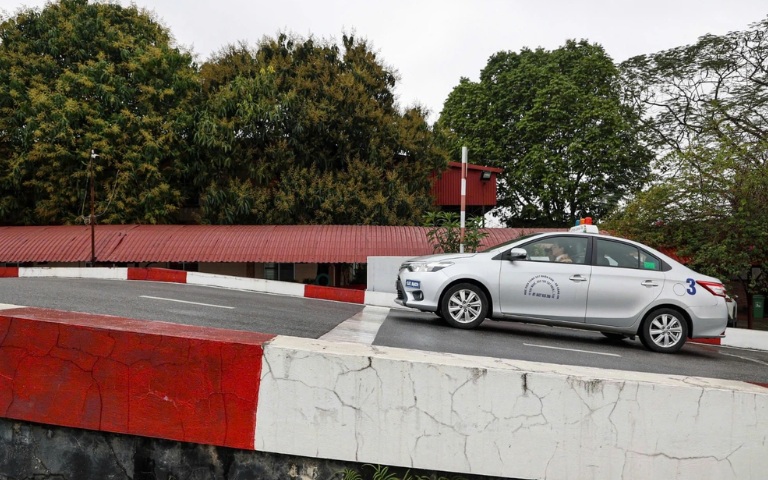As of June 1st, 2025, the new road motor vehicle testing exam, comprising 600 questions, will officially be implemented nationwide.
The new exam is designed as an upgrade to the current one, based on the theoretical framework of relevant road and railway traffic safety laws and regulations. The adjustments aim to ensure the content is up-to-date and aligned with new legal provisions, while remaining accessible to learners.
The new exam is divided into 6 chapters: 180 questions on general regulations and road traffic rules; 25 questions on traffic culture, driver ethics, fire prevention and rescue skills; 58 questions on driving techniques; and 37 questions on vehicle construction and repair. Additionally, there are 185 questions on road signs, 115 questions on obstacle course interpretation, and practical traffic situation handling.
According to evaluations, the content on obstacle courses and signs has seen the least change from the previous exam. In contrast, the sections on traffic rules and general regulations have been significantly supplemented and adjusted to match contemporary traffic realities.
Notably, the new exam excludes a chapter on “transport business operations,” unlike the old one. Instead, individuals engaged in driving for commercial transport purposes must undergo separate vocational training in operations to obtain a practice certificate as mandated.
An important new feature is the categorization of the question bank by driver’s license class. This change stems from the revised driver’s license classification system and aims to ensure that testing accurately assesses the learner’s ability and intended scope of vehicle operation.
The B, C1, C, D1, D2, D, and trailer-towing classes like BE, C1E, CE, D1E, D2E, and DE will use all 600 questions, including 60 critical traffic safety scenario questions. Answering even one question incorrectly in this group will result in a failing grade for the theory test.
For the B1 class (non-professional drivers), the applicable exam consists of 300 questions, 30 of which are critical.
For motorcycle classes A1 and A, the exam is condensed to 250 questions, along with 20 critical questions.
All questions are in a multiple-choice format with only one correct answer. This format is maintained to ensure objectivity, transparency, and ease of computer-based testing administration.
According to the Traffic Police Department representative, despite the modifications, the new exam is built upon the foundation of the previous one and should not pose a significant challenge for learners. Driving training centers have also been briefed and provided with new curriculum materials to facilitate a smooth transition by June 1st.
The theoretical exam is considered a crucial tool in Vietnam’s driver training and testing process. Tightening the requirements for critical scenario questions is expected to enhance drivers’ awareness and skill in handling hazardous situations, a key factor in reducing traffic accidents.
TH (Tuoitrethudo)
Illustrative image: Internet








































